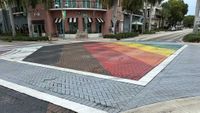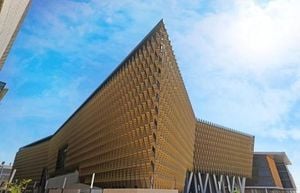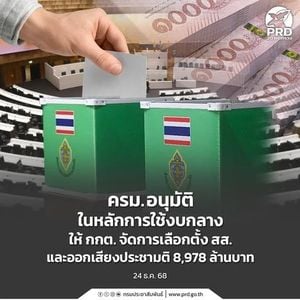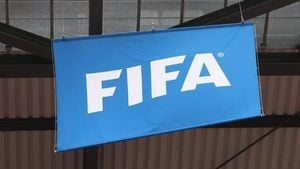In a dramatic showdown that has gripped Delray Beach and reverberated across South Florida, the city’s Pride-themed intersection at Northeast First Street and Northeast Second Avenue was painted over in black not once, but twice, in a span of just 24 hours. The swift and repeated actions by the Florida Department of Transportation (FDOT) have ignited a fierce legal and cultural battle between state authorities and local leaders determined to preserve the symbol of LGBTQ+ pride at the city’s heart.
The saga began late on Monday, September 8, 2025, when FDOT crews arrived under cover of darkness and painted over the rainbow mural that had adorned the intersection. But as dawn broke, a heavy rainstorm swept through Delray Beach, washing away much of the fresh black paint and revealing streaks of the original rainbow colors beneath. By Tuesday morning, the intersection was once again a canvas of smudges and faded hues—a visual metaphor for the unresolved conflict simmering beneath the surface.
City officials and residents awoke to the sight of the altered intersection and quickly mobilized. According to CBS12, the city had received a formal notice from FDOT less than 12 hours before the first paint-over, instructing them to remove the Pride display. When city crews did not act immediately, FDOT took matters into their own hands. The state agency has labeled the colorful crosswalk a safety hazard, citing concerns about visibility and driver distraction. Yet, city leaders have pushed back, arguing that the repainting itself posed risks and that the process has been rushed and heavy-handed.
“This is very important to our community, and we won't just roll over,” said Judge Rand Hoch, founder of the Palm Beach County Human Rights Council, voicing the frustration felt by many in Delray Beach. Vice Mayor Rob Long, standing at the intersection on Wednesday morning as FDOT crews and Florida Highway Patrol officers blocked off the area, was unyielding in his resolve. “Are we representing our residents? Are we doing what we were elected to do? We keep speaking in terms of money. What about the right of our residents?” Long declared, according to WPBF 25 News.
The city’s response was swift and impassioned. On Tuesday evening, September 9, 2025, dozens of residents packed City Hall for a tense, two-hour emergency meeting. Emotions ran high as community members voiced their support for the mural and condemned the state’s actions. The city commission, after heated debate, voted 3-1 to join Fort Lauderdale and Miami Beach in a formal lawsuit against FDOT, seeking to keep the Pride crosswalk in place and challenge what they described as an overreach by the state.
Commissioner Tom Markert rallied supporters with a message of perseverance: “Don’t give up out there. We’re going to fight.” The lone dissenting vote came from Mayor Tom Carney, who expressed support for the crosswalk in principle but worried about the financial consequences of a prolonged legal battle. “I just don’t want the taxpayers of Delray to pay for it, because I don’t think it is ultimately a winning case,” Carney explained, echoing concerns that the city might face the loss of crucial state funding if it defied FDOT’s orders.
City Manager Terrence Moore warned the commission that FDOT had already signaled its intent to return and repaint the intersection if necessary. His prediction proved prescient: by the early hours of Wednesday, September 10, FDOT crews were back on the scene, this time with the Florida Highway Patrol in tow to secure the area. The second coat of black paint was applied, erasing the rainbow once more—at least for now.
The state’s position has remained firm. FDOT has ordered the removal of painted roadways with similar designs across Florida, arguing that such artwork constitutes a hazard to motorists. The agency’s actions have not been limited to Delray Beach; Miami Beach and Fort Lauderdale have also been targeted, prompting a regional alliance of local governments to push back in court. According to CBS12, city leaders contend that FDOT bypassed essential legal procedures and failed to adequately consult with local officials before taking action.
The legal battle is now set to play out in the courts. Delray Beach, along with its South Florida allies, plans to petition for relief from the Division of Administration Hearings and seek a temporary suspension that would prevent FDOT from further altering the crosswalk until the legal proceedings conclude. “We’re going to fight to have our day in court,” vowed Vice Mayor Long, making clear that the issue is about more than just paint on asphalt—it’s about the rights and recognition of the city’s LGBTQ+ residents.
The community’s outrage has not gone unnoticed. According to WPTV, dozens of residents filled City Hall on Tuesday night, many expressing solidarity with the LGBTQ+ community and decrying what they saw as an attack on local values. The intersection, once a symbol of inclusion and celebration, has become a flashpoint in a broader debate over state authority, municipal autonomy, and the visibility of marginalized groups in public spaces.
Yet, the conflict is not without its complexities. Mayor Carney’s concerns about the potential loss of state funding highlight the delicate balance local officials must strike between standing up for community values and safeguarding the city’s financial future. “Are we doing what we were elected to do?” one commissioner asked, reflecting the broader dilemma facing Delray Beach’s leadership.
Meanwhile, the intersection itself has become a physical battleground, with each coat of paint representing a new chapter in the struggle. As of Wednesday afternoon, the area remained cordoned off, watched over by law enforcement and FDOT crews. The fate of the Pride crosswalk—and the city’s broader fight for recognition—hangs in the balance as the lawsuit moves forward.
For now, Delray Beach’s Pride intersection stands as a potent symbol of resistance, resilience, and the ongoing quest for equality. While the outcome remains uncertain, one thing is clear: the city’s residents and leaders are not backing down, determined to see their voices heard both in the courtroom and on their own streets.




